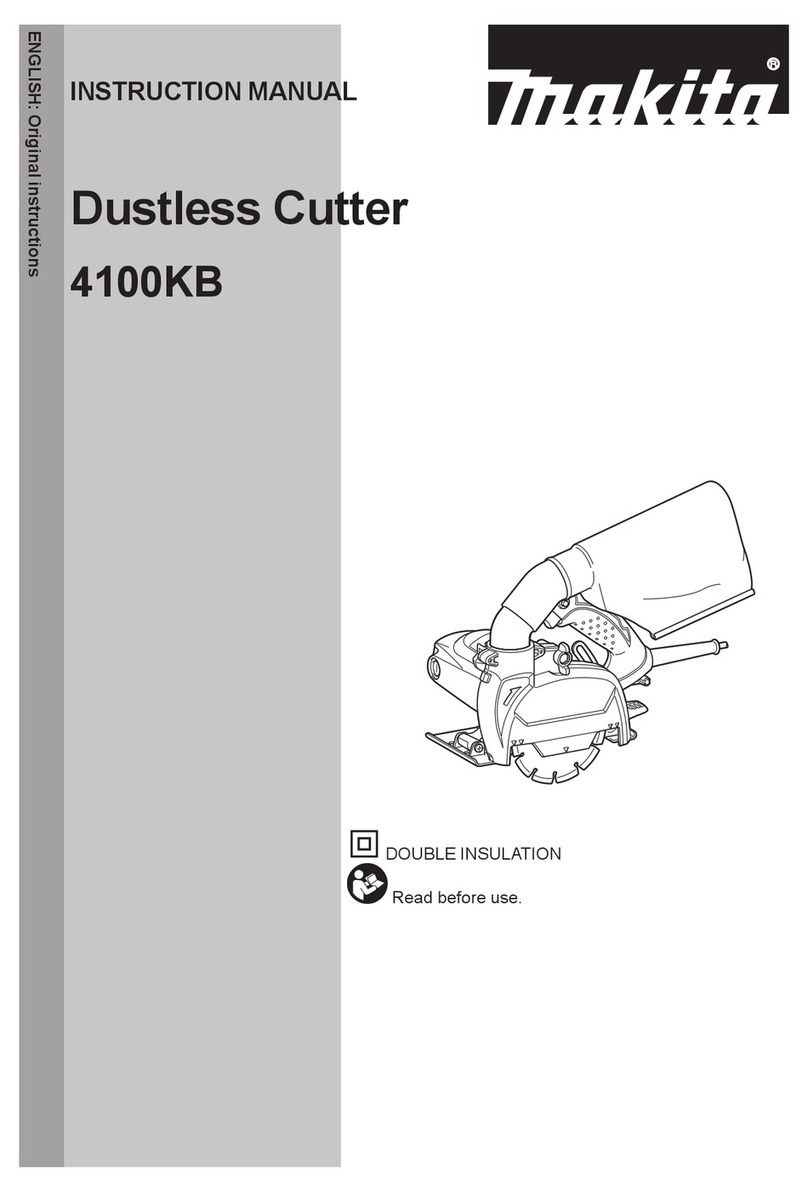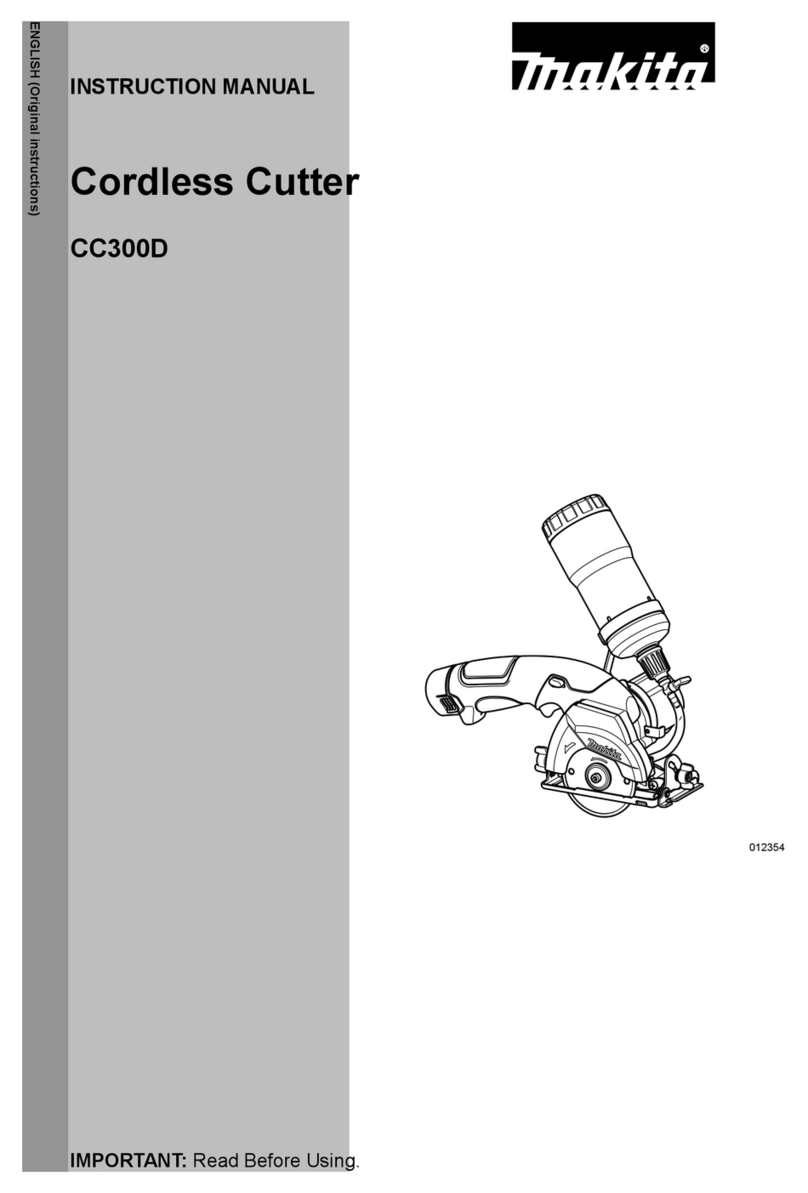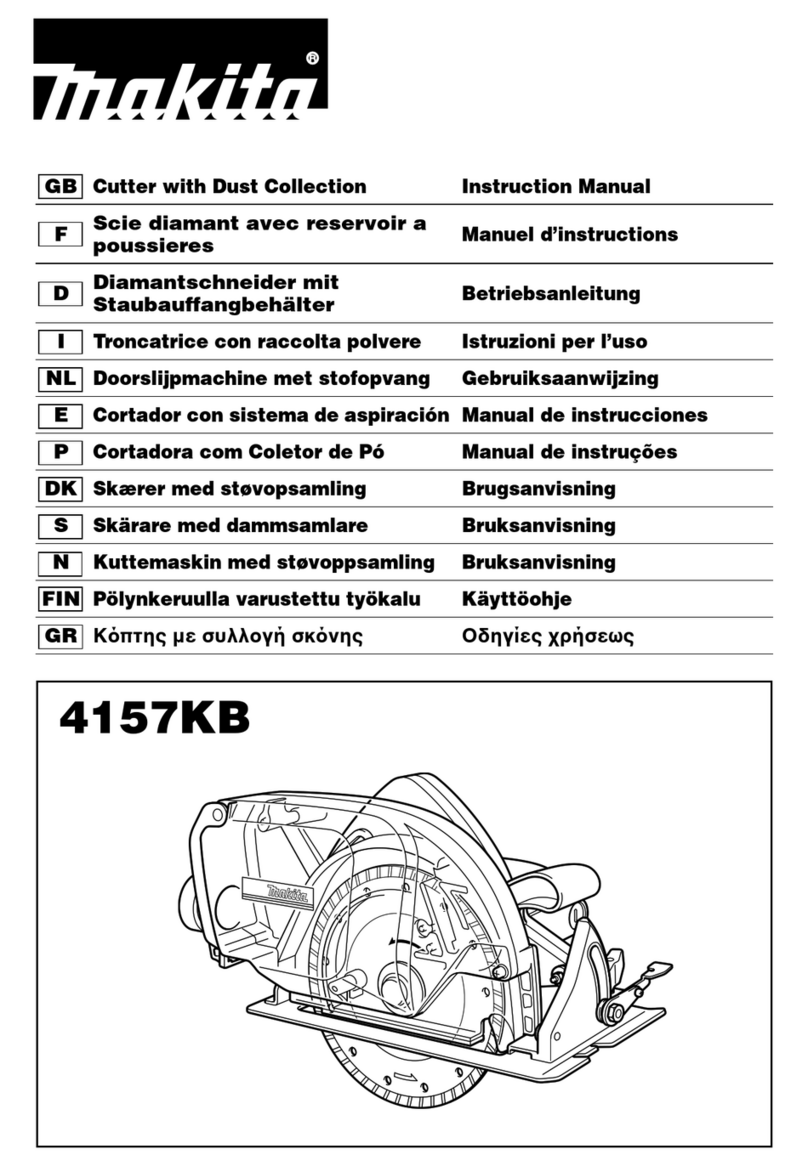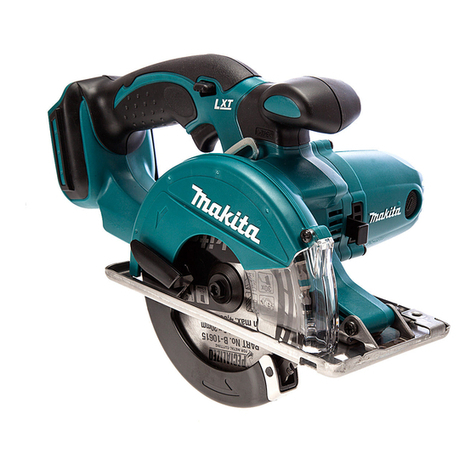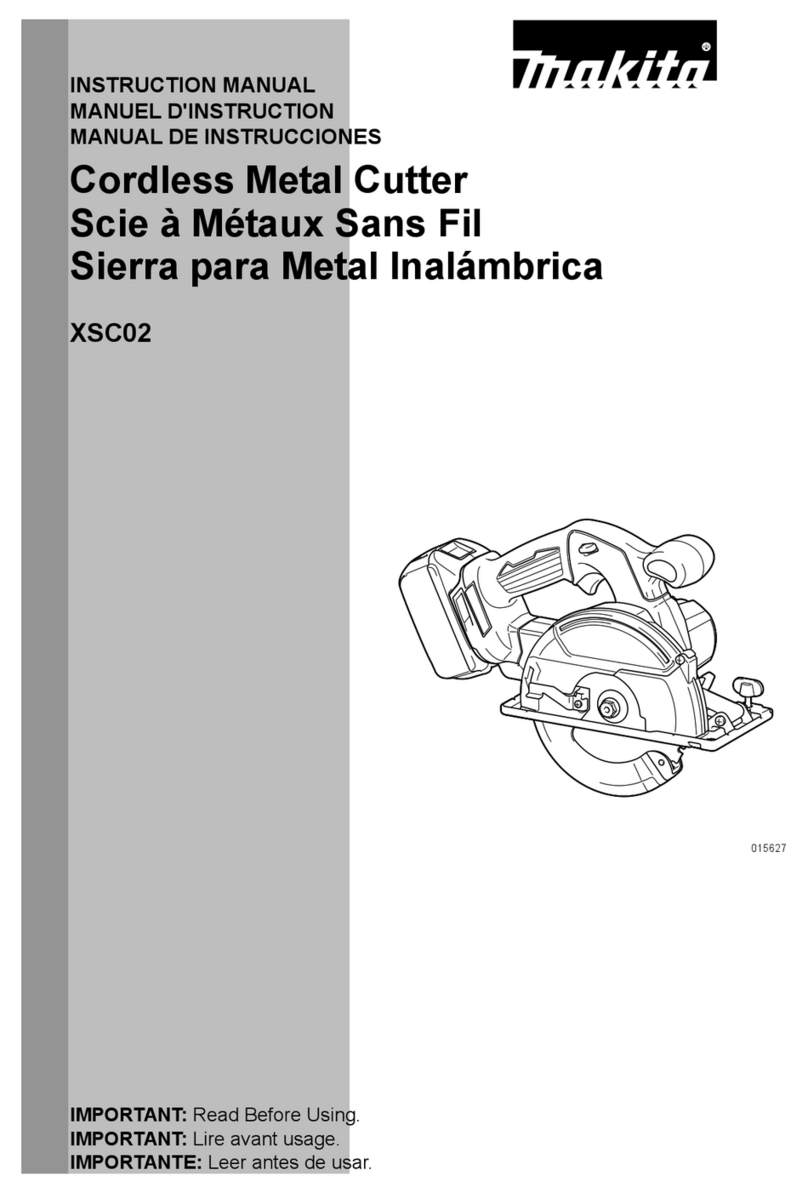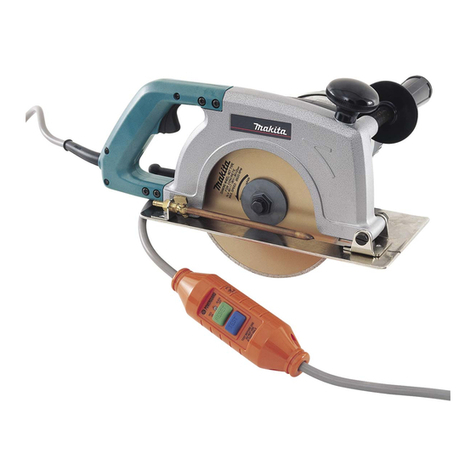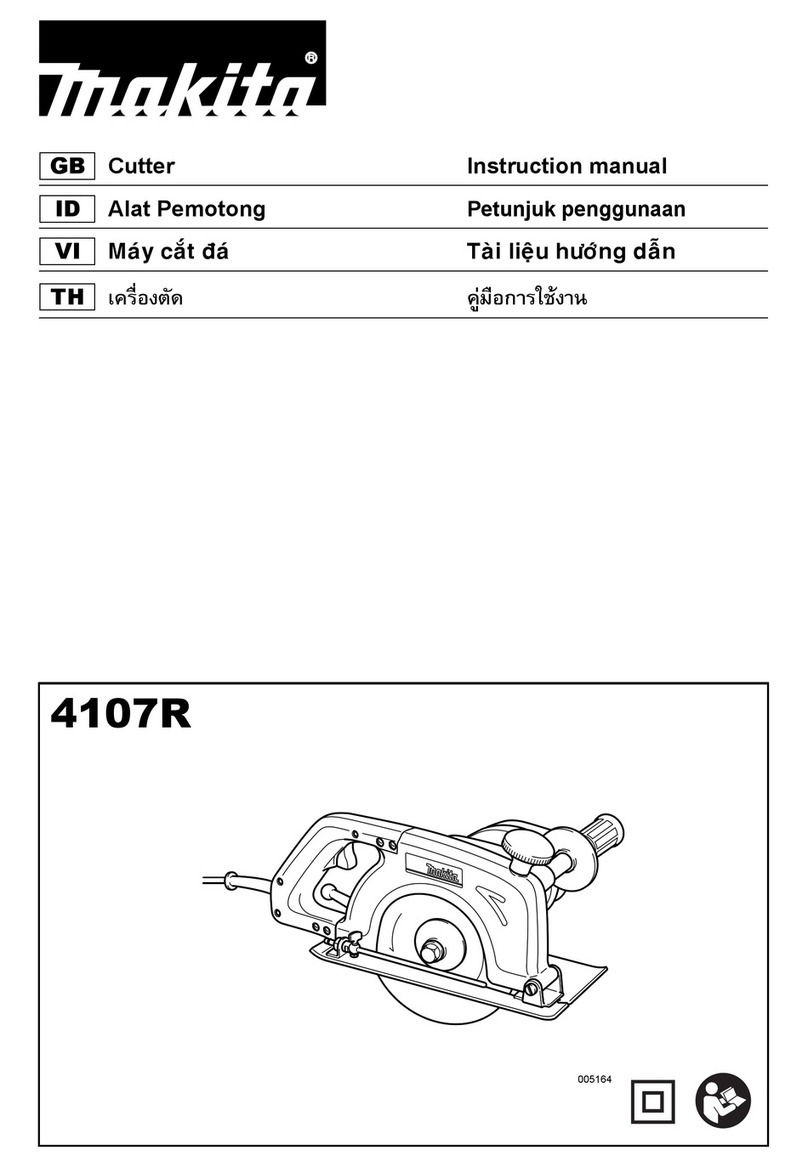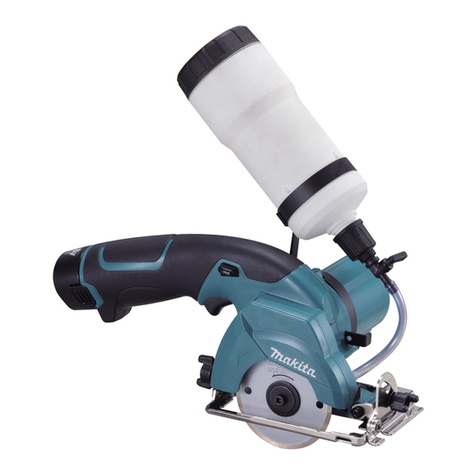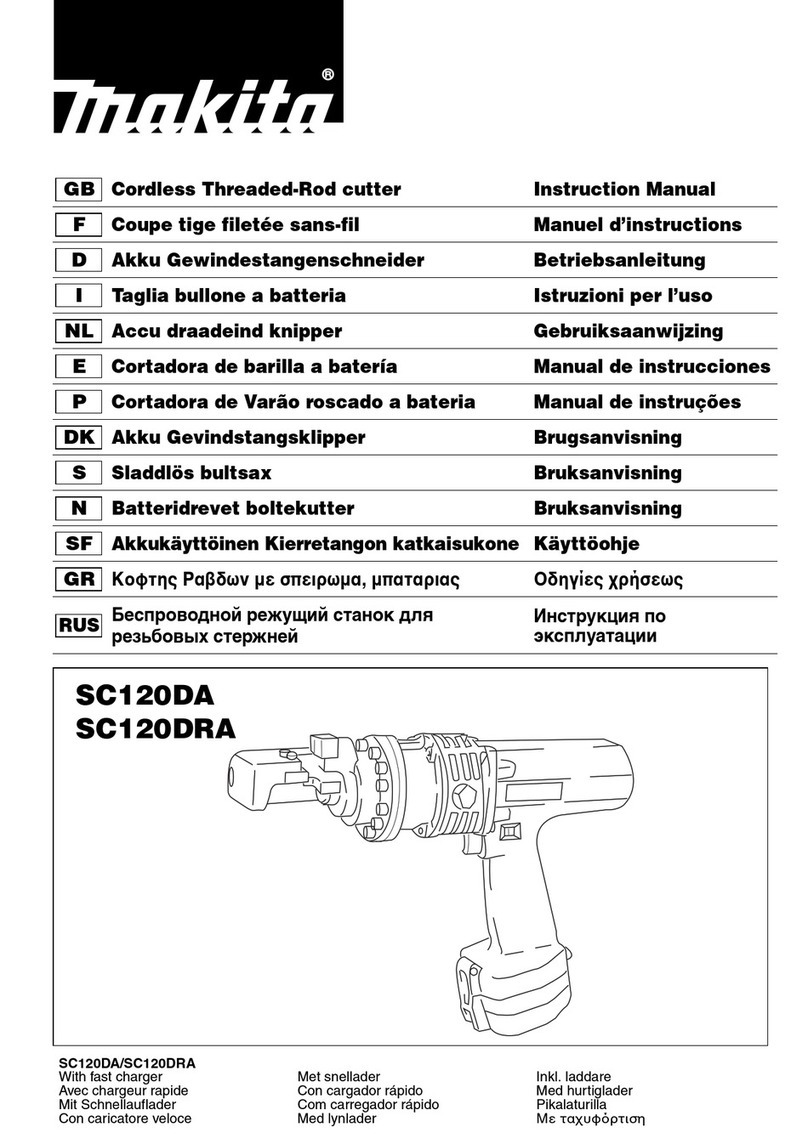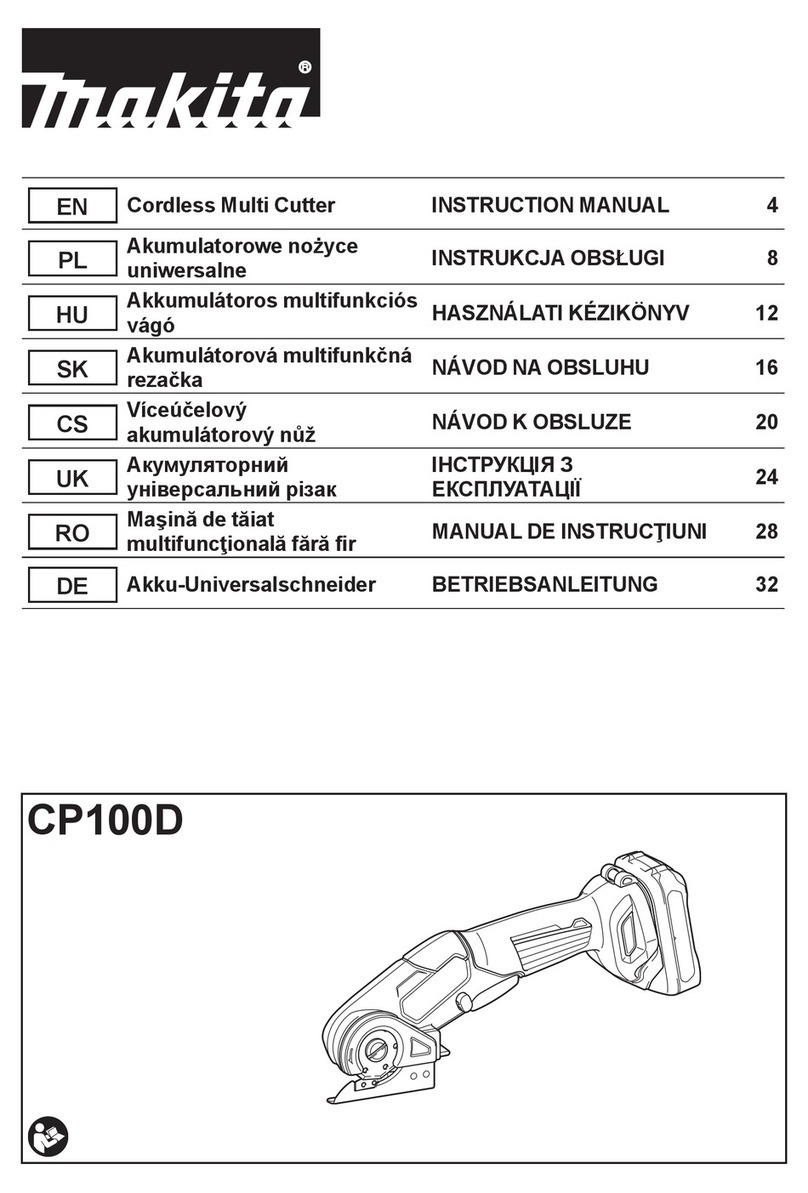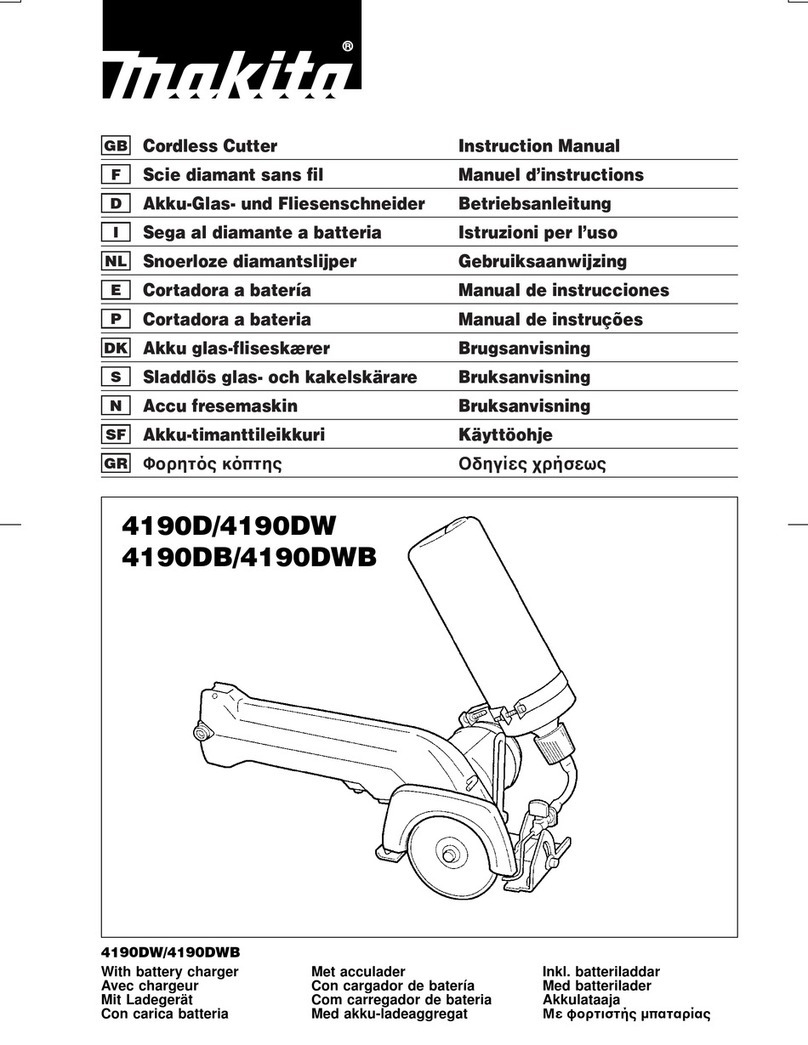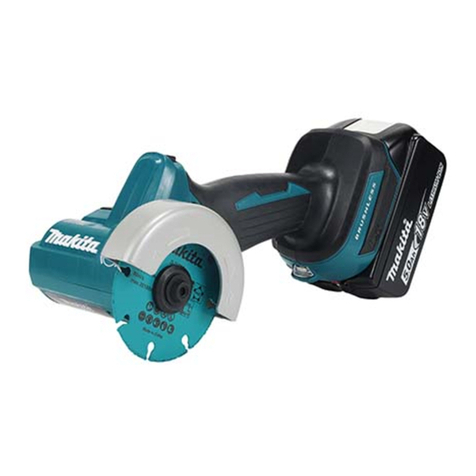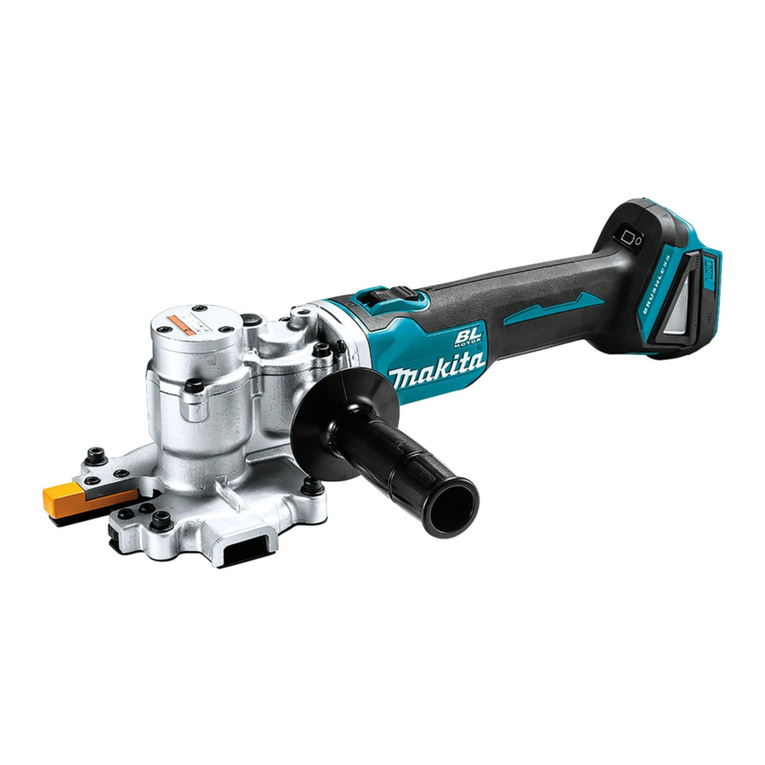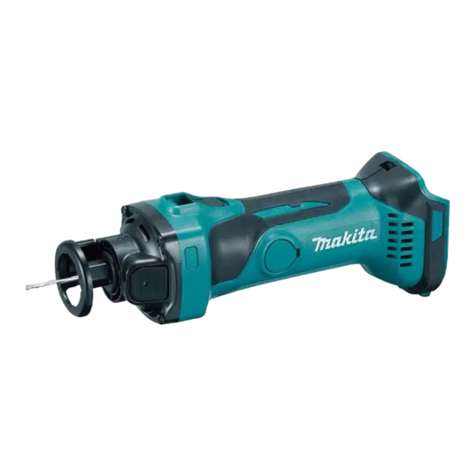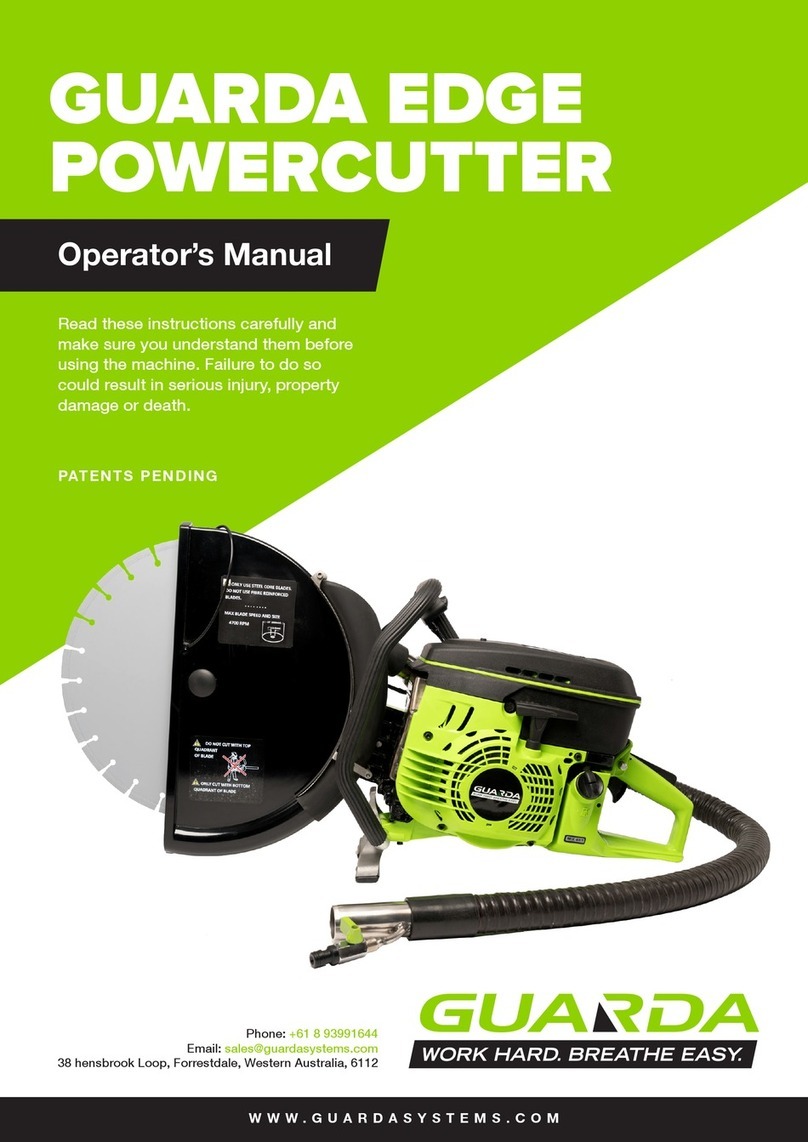
[1] NECESSARY REPAIRING TOOLS
DescriptionCode No. Use for
Retaining ring pliers ST-2N for External ring1R003
press-fitting Ball bearing 6203LLU into Cutting deviceBearing setting pipe 25-17.21R030
assembling Clutch complete to Crankshaft
Torque wrench shaft 20-90N·m1R223
CAUTION: Repair the machine in accordance with “Instruction manual” or “Safety instructions”.
Warning: Follow the instructions described below in advance before repairing:
• Wear gloves.
• Remove the cutting tool from the unit.
• When the engine is hot from use, cool down the engine enough or you can get burned.
• Remove remaining fuel from Fuel tank and Carburetor completely. [FLAMMABLE MATERIAL KEEP FIRE AWAY]
• Remove Spark plug cap from Spark plug.
• Repair the engine on a stable workbench and in a clean workplace kept as free of dust and debris as possible.
• In order to avoid wrong reassembly, draw or write down where and how the parts are assembled, and what are the parts.
It is also recommended to have boxes ready to keep disassembled parts by group.
• Handle the disassembled parts carefully. Clean and wash them properly.
• If some bolts and screws are too tight, use Impact driver.
• Tighten the bolts and the screws to the specified torque as shown in "[5] Tightening torque specifications".
• Each time after you mounted a main part of the engine such as the piston, check if it moves smoothly
without abnormal noise by manually turning the crankshaft.
• After completion of reassembly, check for loose parts or abnormal noise and vibration
by manually turning the crankshaft.
removing Lock off lever
Ratchet head 12.7 (for 1R223)1R224
removing/ assembling CotterScrewdriver magnetizer1R288
Retaining ring pliers RT-2N for Internal ring1R005 removing Cotter
Repair
removing Pin 5 from Rocker arm assemblySpring pin extractor 4.01R308
Hexalobular bit VT-27 (6.35mm)1R290
1R291
removing/ assembling Hexalobular bolt
Retaining ring pliers1R311 removing Tubes
Flywheel puller1R364 removing Flywheel
Feeler gauge set1R366 adjusting the gap between Ignition coil and Flywheel,
Rocker arm assembly and Valve section, Spark plug
Crank shaft lock bolt M10 holding the position of Piston/ preventing Crankshaft from
being rotated
1R372
Cotter removal attachment1R389 removing Exhaust / Intake valve system
Retaining ring S and R pliers removing/ installing Retaining ring R-40
Socket/ Socket bit 17--- removing/ installing Clutch
Socket/ Socket bit 24--- removing/ installing Clutch
Wire brush--- cleaning Spark plug
Hex wrench 2.5--- assembling/ removing / adjusting M5 Hex socket head bolt
Wrench 8--- holding M5x9 Hex nut
P 2/ 19
[2] GASKET
Once Gasket is removed:
(1) Clean up the mating surface where the gasket was installed to maintain its sealing performance.
(2) Replace it with a new one.
